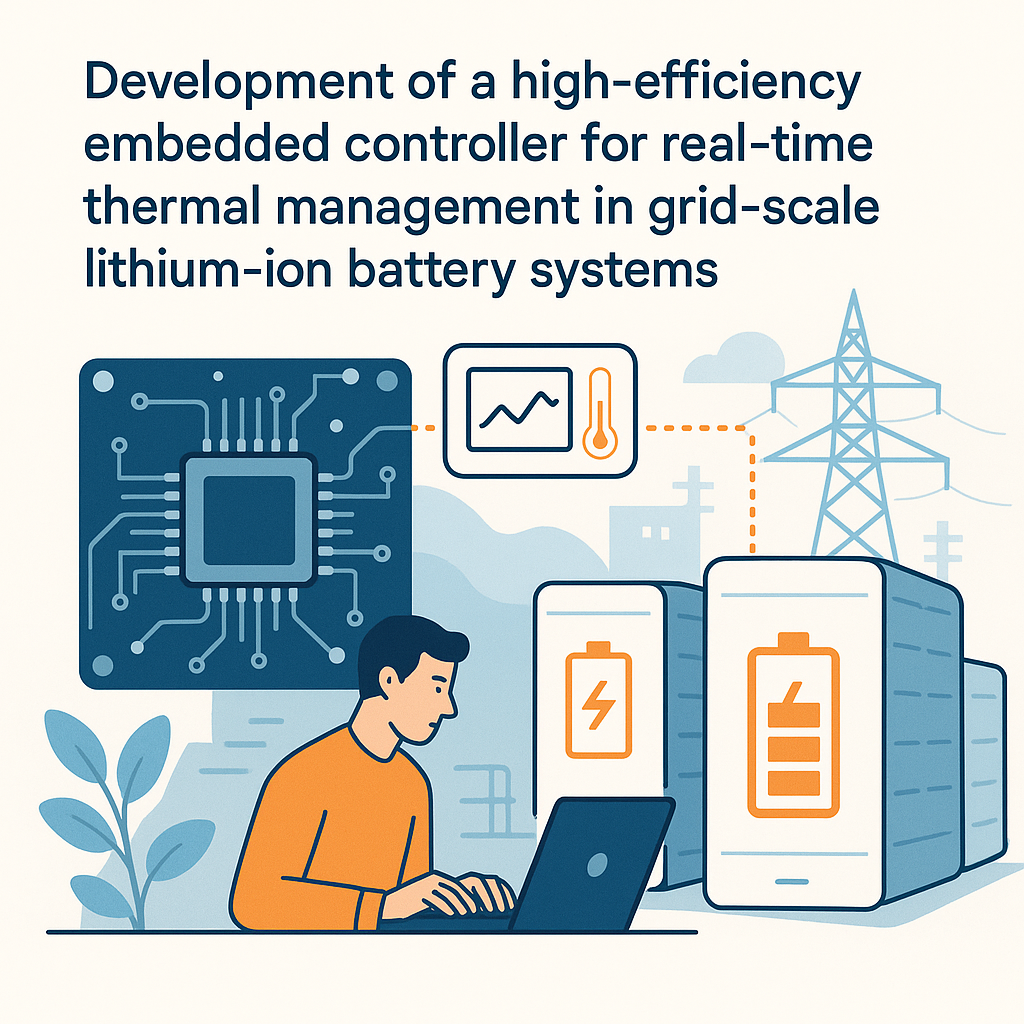Introduction
In recent years, lithium-ion batteries have become a cornerstone for energy storage solutions, especially in grid-scale applications. As the demand for renewable energy sources grows, so does the need for efficient battery management systems. This blog post explores the development of a high-efficiency embedded controller designed specifically for real-time thermal management in grid-scale lithium-ion battery systems.
The Importance of Thermal Management
Thermal management is critical in ensuring the longevity and performance of lithium-ion batteries. Overheating can lead to:
- Reduced battery life
- Increased risk of thermal runaway
- Lower overall efficiency
Implementing effective thermal management strategies is essential to mitigate these risks, improving both safety and performance.
Key Features of the Embedded Controller
The development of a high-efficiency embedded controller incorporates several key features that enhance its functionality in thermal management:
- Real-Time Monitoring: Continuous assessment of battery temperature and performance parameters.
- Adaptive Control Algorithms: Algorithms that adjust cooling strategies based on real-time data.
- Integration with Battery Management Systems (BMS): Seamless communication with existing BMS to optimize performance.
- Scalability: Designed to accommodate various battery sizes and configurations.
Design Considerations
During the development of the embedded controller, several design considerations were made:
- Power Efficiency: The controller must operate with minimal power consumption to avoid draining the battery it manages.
- Robustness: The system should withstand harsh environmental conditions, including temperature extremes and humidity.
- Cost-Effectiveness: Utilizing affordable components to ensure the solution remains economically viable.
- Ease of Integration: Simplified interfacing with existing systems to facilitate adoption.
Real-Time Data Processing
One of the standout features of the embedded controller is its capability for real-time data processing. This involves:
- Sensor Inputs: Utilizing temperature sensors placed strategically across the battery system.
- Data Fusion: Combining data from multiple sensors to get a comprehensive view of the thermal state.
- Decision Making: Implementing machine learning algorithms to predict and respond to thermal events proactively.
Cooling Strategies
Effective thermal management requires the implementation of cooling strategies that respond dynamically to changing conditions. Some strategies include:
- Active Cooling: Using fans or liquid cooling systems to dissipate heat during peak loads.
- Passive Cooling: Designing battery enclosures that facilitate natural heat dissipation.
- Hybrid Systems: Combining active and passive methods for optimal performance.
Integration with Renewable Energy Sources
As grid-scale lithium-ion battery systems often operate in conjunction with renewable energy sources, the embedded controller must be capable of:
- Dynamic Load Management: Adjusting the charging and discharging cycles based on energy availability.
- Predictive Analytics: Forecasting energy demand to optimize battery usage and thermal management.
- Grid Synchronization: Coordinating with the grid to ensure stability and reliability.
Testing and Validation
Before deployment, the embedded controller undergoes rigorous testing to validate its performance:
- Simulation Testing: Modeling various scenarios to assess the controller’s response.
- Field Testing: Implementing the system in real-world conditions to monitor its effectiveness.
- Feedback Loops: Incorporating user and operational feedback to refine the system further.
Conclusion
The development of a high-efficiency embedded controller for real-time thermal management in grid-scale lithium-ion battery systems represents a significant advancement in energy storage technology. By focusing on key features such as real-time monitoring, adaptive control algorithms, and effective cooling strategies, this solution addresses the critical challenges of thermal management. As the demand for renewable energy continues to rise, innovations like this embedded controller will play a vital role in ensuring the safety, efficiency, and longevity of lithium-ion battery systems.



